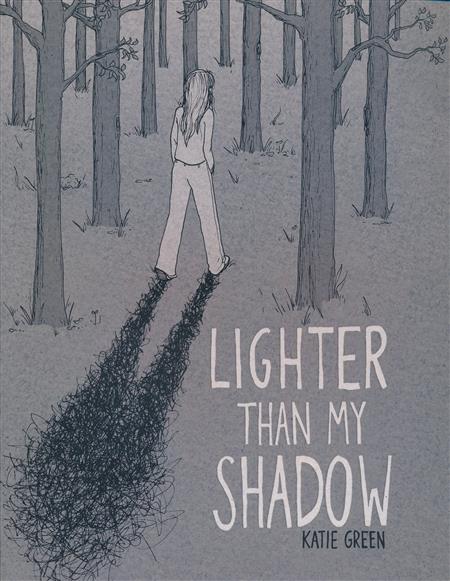As a visual learning, I have always loved incorporating some type of artistic element into my school projects. My notebooks are covered in doodles that (usually) relate to the lecture material surrounding them, and I often like to draw out scenes from a novel or play in order to better understand how characters interact with one another and their environment. I loved comic books and graphic novels as a kid, but stopped reading them when they were no longer stocked on my teachers' classroom shelves. So, when I discovered that there are graphic novels that target young adults as the main audience, I was pretty excited to dive into a world that was already drawn out for me.
Lighter Than My Shadow, a graphic novel written and illustrated by Katie Green, takes the reader through the author's struggles with anorexia nervosa, binging, therapy, and sexual assault. While the subject matter is heavy on the heart, the ability to see the physical changes in Katie along with her thoughts and narration is extremely powerful.
 |
| Source: https://media.instocktrades.com/large/JUL171995.jpg |
The reader follows Katie from childhood through graduate school, and is often left wondering how Katie and other characters could not see the obvious signs of her disorder from the beginning. As I was reading, I found myself frustrated with Katie's parents and friends-- I mean, if I could pick up on the symptoms for OCD, anxiety, and anorexia, why couldn't they? But, in my frustration, I realized how important novels like Lighter Than My Shadow would be for my future students.
The visual component of graphic novels handling themes relevant to young adults is far beyond that of comic books or other illustrations meant for pleasure reading. Allowing the reader to see physical changes or experiences of a character enhances the message behind the narration that visual learners may otherwise miss. Not to mention, the illustrations make longer graphic novels less tiresome and intimidating to readers who lose stamina quickly. The easy accessibility of graphic novels is one of many reasons why I would chose to incorporate Lighter Than My Shadow and other works into my classroom as reading options. With themes that are relevant to my future students, graphic novels meant for young adult readers will definitely have a place on my classroom shelves. Hopefully, I will be able to build a collection that focuses on history. If not, maybe I'll draw my own!
Comments
Post a Comment